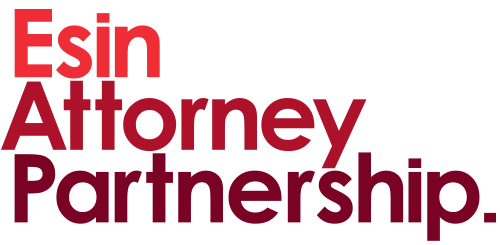![]() Click the button to listen to our legal alert now!
Click the button to listen to our legal alert now!
Recent Developments in the Healthcare Sector
The Turkish Pharmaceuticals and Medical Devices Authority (TİTCK) recently published the (i) Guideline on the Classification of Diversification and Variation Applications; (ii) Guideline on Communication, Organization and Responsibilities of Stakeholders in Market Control Programs; (iii) Guideline on the Good Manufacturing Practices (GMP) in Human Medicinal Products Manufacturing Plants; (iv) Announcement on Annotation/Revision Procedures and Transition to the New Type Licenses; and (v) updated the Precautions to Adopt in Clinical Trials against the COVID-19 Pandemic.
Please click on the relevant link below for our specific notes regarding the recent developments.
The Guideline on the Classification of Diversification and Variation Applications
The Guideline on Communication, Organization and Responsibilities of Stakeholders in Market Control Programs
The Updated Guideline on the Good Manufacturing Practices (GMP) in Human Medicinal Products Manufacturing Plants
The Announcement on Annotation/Revision Procedures and Transition to the New Type Licenses
The Updated Precautions to Adopt in Clinical Trials against the COVID-19 Pandemic
The Guideline on the Classification of Diversification and Variation Applications
New Development
The Guideline on Variations in Licensed Medicinal Products for Human Use, CTD Guideline and Administrative Information Application Form published by the TİTCK in accordance with the Regulation on Licensing of Medicinal Products for Human Use and the Regulation on Variations in Licensed Medicinal Products for Human Use was updated in the recent months. On 14 April 2022, the TİTCK published the Guideline on the Classification of Diversification and Variation Applications to shed light on the categorization of variations and diversification.
Due to the harmonization between the guideline and the EU legislation, the European Pharmacopoeia Standard Terms Introduction and User Guide published by the European Medicines Quality and Health Services Directorate (EDQM), as well as the European Pharmacopoeia Standard Terms and their Turkish equivalents should also be taken into account in applications for diversification.
The guideline is available here (in Turkish).
What’s New?
The guideline sets forth clarifications in determining whether a new application for an authorized product is a variation or a diversification application. The guideline explains terms such as strength, dosage form, pharmaceutical dosage form and pharmaceutical form. The guideline also includes certain examples of various preparations such as oral, parenteral and topical.
The special inner packaging of a product is generally accepted as a different pharmaceutical form, and if the inner packaging is modified or another inner packaging is added, a license diversification application will be required. On the other hand, changes in fill weight/volume of sterile multi-dose (or single dose, partial use) products, including non-parenteral multi-dose (or single dose, partial use) biological/immunological medicinal products, are considered variations.
In accordance with Annex-1 of the Regulation on Variations in Licensed Medicinal Products for Human Use, a diversification application is required provided that the strength, active substance(s) or the route of administration is changed or a route of administration is added. In cases where a new license is to be issued as a result of the diversification application, the license holder may request the current license to remain valid or to be cancelled.
The addition or replacement of a measuring or application device that is not an integral part of the inner packaging is a variation, whereas an application for diversification is required if the addition, replacement or modification of a device that is an integral part of the inner packaging requires a change in strength, pharmaceutical form or route of administration.
The Guideline on Communication, Organization and Responsibilities of Stakeholders in Market Control Programs
New Development
On 26 April 2022, the TİTCK published the Guideline on Communication, Organization and Responsibilities of Stakeholders in Market Control Programs. The guideline sets forth the communication, organization and responsibilities of internal and external stakeholders regarding the market control of human medicinal products, active substances and special medical purpose diet foods.
The guideline is available here (in Turkish).
What’s New?
As per the guideline, Provincial Health Directorates will collect samples of the products on the list created by the Pharmaceutical Market Control and Consumer Issues Unit (“Unit“), share them with the Unit that will record the samples in the New Documentation System (YEBESİS) and carry out the necessary examinations. The Unit will write a letter of conformity to the Provincial Health Directorate provided that laboratory and analysis results are appropriate. Otherwise, recall procedures will be initiated.
The guideline separately regulates the duties and responsibilities of administrative units such as the Unit, Department of Analysis and Control Laboratories, Department of Economic Evaluation and Medicine Supply Department and Provincial Health Directorates, which are required to work in cooperation throughout the process. The guideline also includes the internal and external stakeholder communication list of the market control program, the work flow and stakeholder charts.
The Updated Guideline on the Good Manufacturing Practices (GMP) in Human Medicinal Products Manufacturing Plants
New Development
On 22 April 2022, the TİTCK updated the 2022/03 version of the Guideline on the Good Manufacturing Practices (GMP) in Human Medicinal Products Manufacturing to ensure compliance with the PIC/S GMP Guideline Version PE 009-15.
The guideline is available here (in Turkish).
What’s New?
Annex-2A of the guideline addresses the manufacture of advanced therapy medicinal products with detailed explanations on the pharmaceutical quality system, personnel, facilities and equipment, documentation and production. Annex-2B was updated regarding the manufacture of biological medicinal substances and products for human use. In addition, a glossary section was added to clarify the terminology in the aforementioned annexes.
The amendments will enter into force on 1 January 2023. The regulations under Annex-2 of the guideline version 2018/02 dated 1 August 2018 will remain in effect until 1 January 2023.
The Announcement on Annotation/Revision Procedures and Transition to the New Type Licenses
New Development
On 26 April 2022, the TİTCK published the Announcement on the Annotation/Revision Procedures and Transition to the New Type Licenses regarding the license procedures upon variation approval for the human medicinal products. As per the announcement, the license and annotation/revision procedures for licensed medicinal products for human use will begin as of 6 June 2022.
The announcement is available here (in Turkish).
What’s New?
The main points that companies should pay attention to in applications to be submitted to the Department of Pharmaceutical Licensing are as follows:
- For certified licenses, an application must be submitted along with the “license annotation” document and the certificate annexed to the license.
- Submission of the approval letters is necessary for all procedures that include revision of the certified licenses. Applications without an approval letter will be returned.
- Revision applications must be made to the relevant department from which approval was obtained. If approvals are obtained from various departments, a single application with the approval letter should be submitted to the unit with the highest number of approvals.
- As per the transition process from the former licenses to certified licenses stipulated under the Regulation on Licensing of Medicinal Products for Human Use, an application for transition to a certified license can be made instead of an annotation.
- For the transition to a certified license, an application must be submitted with the document of “application for transition to a certified license,” the original license and the financial fee receipt. The Certified License Transfer Information Table provided under the announcement must also be submitted.
In applications where partial approval is granted with conditional eligibility, the relevant institution’s letter stating that the conditions are met and accepted must also be submitted.
The Updated Precautions to Adopt in Clinical Trials against the COVID-19 Pandemic
New Development
On 5 May 2022, the TİTCK updated the document of Precautions to Adopt in Clinical Trials against the COVID-19 Pandemic. The relevant update aims to moderate the precautions adopted against the pandemic during the normalization period.
The document is available here (in Turkish).
What’s New?
The TİTCK’s document, “The Precautions to Adopt in Clinical Trials against the COVID-19 Pandemic,” which was published on 20 March 2020, was revised for the normalization period, whereby certain precautions were abandoned. Accordingly, as of 5 May 2022, investigator meetings, training on good clinical practices and clinical research and ethics committee meetings can be held face-to-face. In addition, the regulation regarding the submission of research applications via e-mail with electronic signature to the ethics committee was cancelled.
Conclusion
The TİTCK continues to provide guidance for companies working in the healthcare industry. Companies should carefully review the TİTCK’s announcements and guidelines and take necessary actions to ensure compliance.



